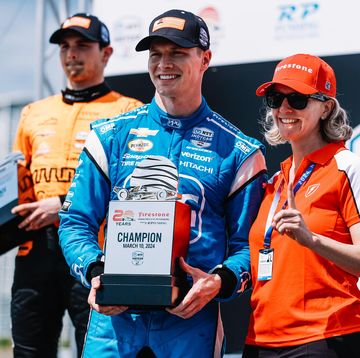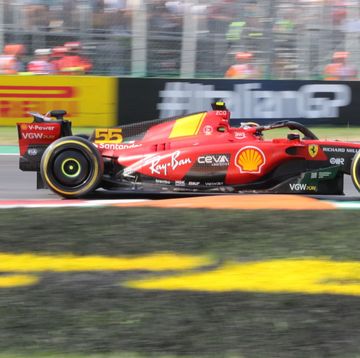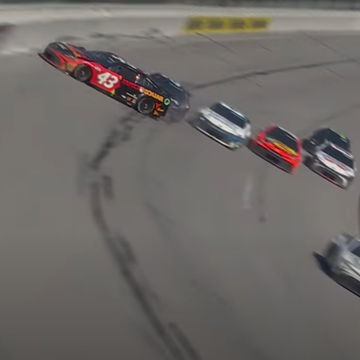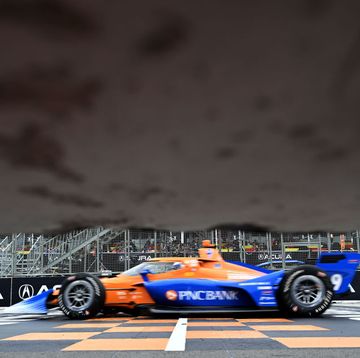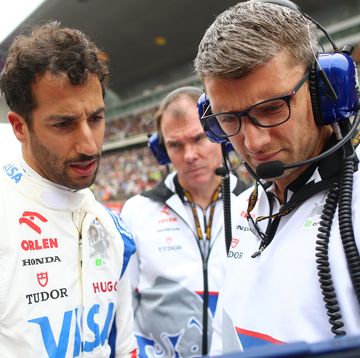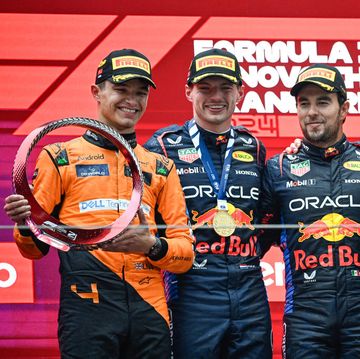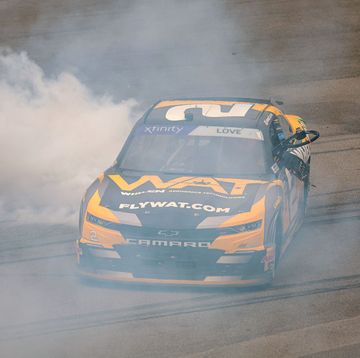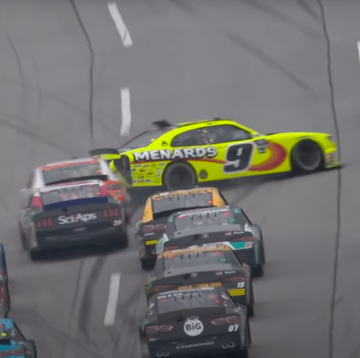Today marks the second annual Indianapolis 8 Hour. If the SRO-organized GT endurance race did not show up on your radar, you are not alone. The American leg of what is known as the Intercontinental GT Challenge is one of three endurance races (five, in non-pandemic years) organized between GT3 cars by the organization that created GT3 racing, largely in an effort to standardize the format for events like the 12 Hours of Bathurst and 24 Hours of Spa. That has limited fan appeal, largely among the most dedicated sports car fans in Europe, but the idea of sports car racing at Indianapolis Motor Speedway is an interesting one.
Track owner Roger Penske agrees. He wants IMSA to race at the track in the near future, a sentiment echoed by track president J. Douglas Boles. Sure, IMSA raced at the track alongside NASCAR back in 2014, but the two want something more special: A marquee event, maybe even a fifth American endurance race, around the road course that was renovated for IndyCar competition.
An endurance race at Indianapolis would put the track in elite company. IMS would join the 24 Hours of Daytona (held since 1962), 12 Hours of Sebring (since 1950), Six Hours of the Glen (since 1948), and the Petit Le Mans (a ten hour race at Road Atlanta held since 1998). A new endurance event at Indianapolis would be the first serious attempt to add a race to that canon since Petit Le Mans, a tall order even for a track as prestigious as the 112 year-old Speedway.
But the track's temporary road course, renovated significantly in 2014 for the IndyCar Series to act as its own support race at the Indianapolis 500, has become a surprisingly interesting track. What was once one of Formula 1's dullest layouts has become the site of a few great IndyCar races, thanks in no small part to a few great passing zones. Add in the wide variety of sounds that make a sports car field so distinct echoing through the legendary grandstands along the frontstretch and the track has another heavily-marketable spectacle on its hands.
Does IMSA want a fifth endurance race? Does it have room on a schedule already heavily restricted by what tracks draw a crowd for sports cars, what tracks have a tradition to uphold, and what tracks are valuable to manufacturers? Even if the series can find room, would teams object to yet another more expensive long race on a schedule that for many teams also includes the 24 Hours of Le Mans? Probably not. If a new event is to be introduced, however, there is no better time to do it than 2023.
That season marks the debut of LMDh, the new class that is re-introducing a wide variety of manufacturers to the top class of IMSA racing. It also marks the convergence of IMSA's top prototype class with the top class run by the FIA World Endurance Championship. Teams from that series interested in IMSA will certainly race for glory at Daytona and Sebring. While IMSA will certainly also offer those teams a chance to compete at Watkins Glen and Road Atlanta, Indianapolis could set itself apart as the race that accommodates international programs with a track more like the GP-style circuits the World Endurance Championship races. A late Summer date, along a gap in the WEC calendar, would give those teams unsatisfied with just six or seven races for their world-class prototypes a stage to easily show up and race for six, eight, or ten hours in the U.S.
Recruit those entries and promote the event as a race of two worlds where the sole focus is the crossover entries rather than the crossover entries coming because of the race's history. Schedule the race alone, like today's SRO event, rather than as a support race for IndyCar or NASCAR. If neither teams nor fans are interested, Indianapolis and IMSA can cross the idea off as a failure and move on. If it works, Penske and Boles get another race weekend at one of the world's most famous venues and elevate an average weekend to another spot in America's sports car racing canon.

